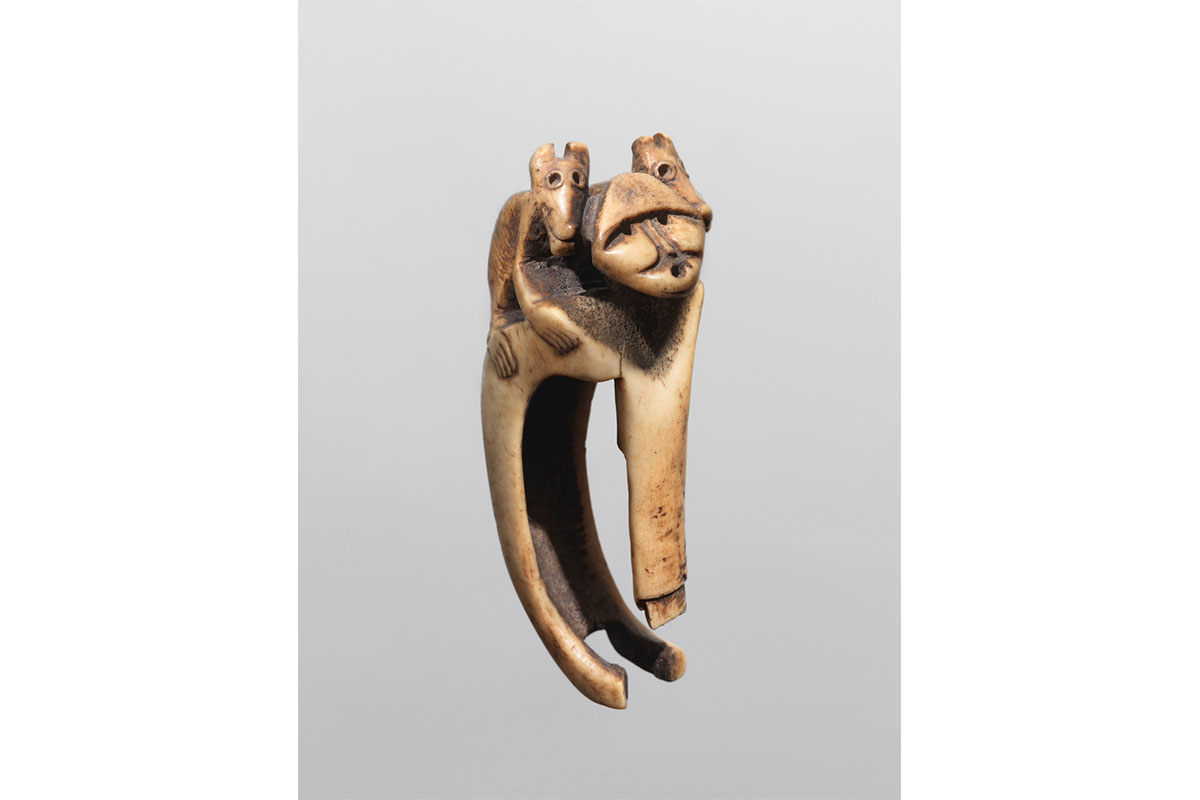Adze Handle
Lower Columbia River
ca. 1750-1820
elk antler
height: 6 ¼"
Inventory # CN4313-128
Sold
PROVENANCE
Collected on Sauvies Island, near Portland, Oregon in the 1920’s
Private collection, Tacoma, WA
Donald Ellis Gallery, Dundas, ON
Private collection, Toronto, ON
RELATED EXAMPLES
Peabody Museum of Archaeology, #39, See: A Time of Gathering, Wright, University of Washington Press, 1991, pl. 59
Art Institute of Chicago, (no. Rw 65-262) - See: American Indian Art, Feder, 1965, pl. 144
Thomas Burke Memorial Museum no. 4588 – See: Spirit and Ancestor, Holm, University of Washington Press, 1987, pg. 35, pl. 4
It is with the adze that the artisans of the Northwest Coast hewed their material life and culture from the towering forests of the region. The straight adze, as this type is known, is perhaps the oldest form of the tool. If the archaeological levels at the Ozette site in Washington are an indication, the straight adze predates the historically ubiquitous D-adze form by many centuries. A straight adze is in concept one leap above a chisel, providing an integral guard for the protection of the user's fingers and knuckles as well as the additional weight that enhances the inertia of the tool as it is rhythmically swung in use. The straight adze in this format may have evolved with the artisan's adaptation to cutting blades of iron and steel, which were already in well-established use at the time of the first Euro-American arrivals in the area in the late 18th century. Bulkier carving blades of stone, such as jadeite or nephrite, would not fit well in this configuration. The blade of this adze would have been bound on the inner surface of the thin section directly below the human face, captured between the "feet" of this image that curve forward from the section that forms the knuckle guard on the opposite side of the tool.



